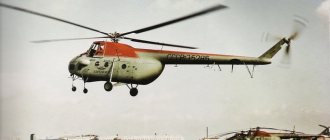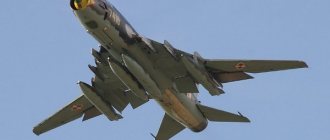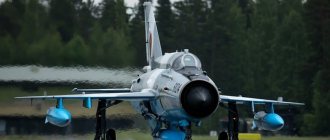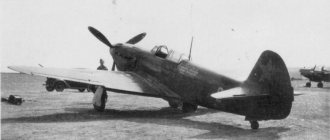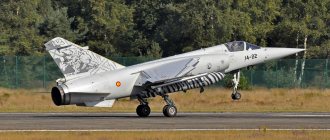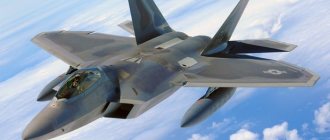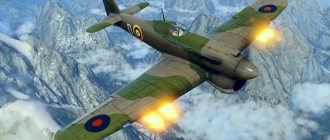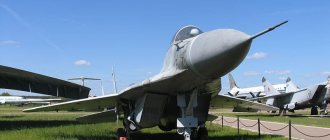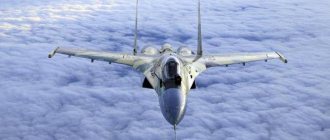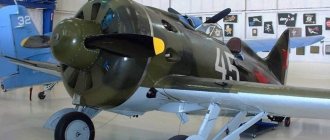TASS DOSSIER. On July 31, 2022, the press service of the Eastern Military District reported that an engine failure occurred on a Su-35S aircraft in the Khabarovsk Territory during scheduled training flights. According to preliminary data, the plane crashed in the Sea of Okhotsk. The pilot ejected, was promptly found by a search team and taken to his home airfield; there was no threat to his health.
Su-35 is a Russian multi-role supersonic super-maneuverable fighter of the 4++ generation. Further development of the “single-seat” line of Su-27 aircraft. The combat modification for the Aerospace Forces (VKS) of Russia has the index Su-35S.
History of design and testing
Work on a modification of the Su-27 interceptor capable of detecting and hitting ground targets (that is, on a full-fledged multifunctional fighter) began at the Sukhoi Design Bureau back in the mid-1980s. The aircraft was named Su-27M (T-10M). It was equipped with new electronic equipment (including rear-view radar), weapons, electronic warfare (EW) systems, multifunctional indicators in the cockpit, an in-flight refueling complex, and more.
The first flight of the Su-27M (soon named Su-35) took place on April 1, 1992. The Su-35 was demonstrated at various international air shows and offered for export, but found no buyers. Serial production of new fighters did not begin due to economic problems.
Some of the new technical solutions used in the Su-27M were then used in Su-30 fighters of various types and Su-37. Work on a single-seat multirole fighter based on the Su-27 resumed in the mid-2000s. He received the code “product T-10BM”. The designers installed new avionics on the fighter, the Irbis radar station with a passive phased antenna array, and new, more powerful engines with a rotary thrust vector. Also, a new information and control system was used on the aircraft, the creators of which were awarded the Russian Government Prize in the field of science and technology for 2022.
During the “rearrangement” it was decided, in particular, to abandon the front horizontal tail and the aerodynamic brake, which were used on the Su-27M.
The first flight of the T-10BM was carried out on February 19, 2008, the aircraft was piloted by Honored Test Pilot of the Russian Federation Sergei Bogdan.
The fighter is mass-produced at the Komsomolsk-on-Amur Aviation Plant named after Yu. A. Gagarin, KnAAZ). In 2009, a contract was signed for the supply of 48 aircraft to the Russian Air Force. The first 12 fighters were transferred on February 12, 2014 to the 23rd Fighter Aviation Regiment (Dzyomgi airfield, Komsomolsk-on-Amur, Khabarovsk Territory). The contract was fully completed in 2015, after which the military ordered another 50 aircraft. On February 19, 2022, the Rostec state corporation reported that the Russian Aerospace Forces operate about 70 copies of the Su-35S.
Since 2015, aircraft of this type have been part of the Russian Aerospace Forces group in Syria. On September 19, 2022, the press service of the Ministry of Industry and Trade of the Russian Federation reported that the Su-35S fighter had been adopted by the Russian Aerospace Forces (VKS).
On April 4, 2022, at a meeting of the state commission reviewing the progress of testing the Su-35S at the 929th State Flight Test Center (GLITs) named after V.P. Chkalov in Akhtubinsk, Deputy Minister of Defense of Russia Yuri Borisov highly appreciated the quality of work performed on the aircraft . He also emphasized that “the flight crew operating the Su-35S in Syria very highly appreciates the quality of the aircraft and its combat and operational characteristics.”
Proven fighter
The conflict in Syria became a baptism of fire for the Su-35S. These fighters were not part of the initial air group that arrived in the Syrian Arab Republic (SAR) in September 2015. But they were sent there at the beginning of 2016, after the worsening of relations with Turkey due to the downed Russian Su-24 bomber.
The aircraft was tested not only as an air fighter. Su-35s often attacked ground targets. The military has tested it in a variety of applications, with conventional and precision-guided weapons. Among them are adjustable bombs with a passive homing head KAB-500Kr, guided missiles Kh-29TD and even anti-ship Kh-35U, specially modified for attacks on ground targets. In some sorties, the combat load reached the maximum possible 8 tons.
The air regiment arrived
Su-35S at Khmeimim airbase in the Syrian province of Latakia
Photo: RIA Novosti/Ramil Sitdikov
The fighters were also busy with their main task. The command attracted them to escort Russian bombers over the SAR, including long-range Tu-22M3 and strategic missile carriers Tu-95MS. They were also regularly sent to intercept foreign reconnaissance aircraft and drones observing our troops.
Thrust for the better: Su-30SM fighters will receive a super-powerful upgrade
The vehicles will be upgraded to the CM2 “Super-Sukhoi” variant
Currently, four fighter aviation regiments are fully or partially re-equipped with the Su-35S. The first to receive them were units located in the Far East, not far from the manufacturing plant in Komsomolsk-on-Amur. Then they began to equip the Western Military District, which directly borders the territory of NATO member countries. Units in the Tver region and Karelia switched to them.
Flight performance
The aerodynamic design of the aircraft is a twin-engine high-wing aircraft with a three-legged retractable landing gear with a front strut. Equipped with two AL-41F1S turbojet engines with a power of 14,500 kgf (afterburner) each. These engines with a thrust vector controlled in one plane were developed by the Saturn Research and Production Association (Rybinsk, Yaroslavl region). The length of the aircraft is 21.95 m, the wingspan is 14.75 m, the height is 5.92 m.
Maximum take-off weight - 34,500 kg, maximum speed - 2,500 km/h (Mach 2.35), maximum flight range without external fuel tanks (FTF) - 3,600 km, with FTF - 4,500 km. The service ceiling is 18 thousand meters. The fighter's radar is capable of detecting targets at a range of up to 400 km and tracking up to 30 air targets simultaneously. The crew consists of one person.
The aircraft lifespan assigned by the manufacturer is 6 thousand hours or 30 years, the engine lifespan is 4 thousand hours.
Su-35
When creating the Su-35, the Sukhoi Design Bureau retreated from the aerodynamic design with the front horizontal tail (PGO), used in the design of the Su-27M, Su-33, Su-30MKI fighters, and returned to the proven classical aerodynamic design of the Su-27. Advances in technology achieved by the beginning of the new decade made it possible to abandon PGO without losing the benefits it provides.
The airframe of the aircraft has undergone changes that have ensured an increase in the designated service life and service life of the aircraft, the placement of a larger fuel reserve compared to the Su-27, and the installation of new on-board systems and radio-electronic equipment. The design and layout of the fuselage head section have been changed. The functions of the brake flap are transferred to differentially deflectable rudders, the design of which has also been modified.
The structure (main elements of the fuselage, wing, empennage and landing gear) of the Su-35 airframe has been strengthened, which made it possible to increase the maximum take-off weight of the vehicle. This made it possible to significantly increase the fuel supply (in the internal tanks the Su-35 carries 11.3 tons versus 9.4 on the Su-27). In addition, the fighter is equipped with an in-flight refueling system and can use external fuel tanks with a capacity of 2000 liters each. The combat load remained the same as on the Su-27 - 8 tons. The number of hardpoints has increased from 10 to 12.
The 117S type power plant with rotary nozzles developed by NPO Saturn has an afterburning thrust 16% greater than that of the AL-31F engines. The assigned engine life has been increased to 4000 hours. The unique integrated digital remote control system “KSU-35” with quadruple redundancy, created by specialists from MNPK Avionika, performs the functions of several systems at once (including thrust vector control) not only increases the flight and maneuverability of the aircraft, but also simultaneously performs the functions ensuring active safety.
The most important difference between the Su-35 and 4+ generation fighters is the presence of fifth-generation avionics on board. Radar with a rotating phased array antenna "Irbis-E", created at the Research Institute of Instrument Engineering named after. V.V. Tikhomirov, is guaranteed to provide detection and capture of standard air targets at a range of up to 200 km (against the ground - up to 170 km), and in a narrower viewing sector - up to 350-400 km. “Irbis-E” is capable of simultaneously tracking up to 30 targets and pointing missiles at 8 of them, without ceasing to monitor the airspace. The radar control system also provides selection of ground moving targets and information support for low-altitude flight.
The second information channel of the weapons control system is a multi-channel optical-location system (OLS) with high sensitivity and noise immunity. It detects and tracks targets using thermal radiation at a distance of up to 90 km, and also measures the distance to the target (the maximum range is 20 km for air targets and 30 km for ground targets). OLS is also used to illuminate ground targets for guiding guided missiles with laser homing heads at them. The suspended optical-electronic container expands the flight and navigation capabilities of the vehicle in the air-to-surface mode.
Navigation and display tools were developed by the Ramensky Instrument-Making Design Bureau and other enterprises of the Technocomplex Research and Production Center in collaboration with MIEA. The information and control field of the pilot's cockpit is made taking into account the principles of optimal presentation of indication information. The display system uses wide-format color multifunctional indicators and a wide-angle color HUD, showing a moving map of the area. The cockpit lighting equipment ensures that the pilot can work with night vision goggles. The principle of a “dark” cabin has been implemented to reduce the workload (providing prompts in critical situations). The pilot is also provided with a helmet-mounted target designation system and a set of means for emergency escape from the aircraft.
The navigation and targeting complex consists of: a laser inertial satellite navigation system (SNS), a radio navigation system, an on-board graphics station, a surveillance and targeting optical-electronic hanging container, fiber-optic and multiplex communication lines.
The S-108 communications complex, developed by NPP Polet, allows you to exchange data automatically through radio channels (2 VHF and HF stations) and carry out voice communication with the pilot through the aviation terminal of the link-16 information exchange system. Data exchange and voice communication channels are crypto-protected. The capabilities of managing the coordinated actions of a group of fighters in the networks of the Air Force, Armed Forces and Navy have been expanded.
The weapons control system allows the aircraft to use almost all modern Russian-made guided and unguided aviation ammunition. The Sukhoi Design Bureau, together with industry and academic science, have found ways to radically (by more than 5-6 times) reduce the radar signature of an aircraft, which significantly reduces its detection range by enemy radars and ground-based radars.
The aircraft's combat survivability is ensured by two spaced apart engines, multi-channel redundancy of all aircraft systems, explosion protection of fuel tanks, and an electronic countermeasures (EW) system. The electronic warfare system includes: an active jamming station for group and individual mutual protection, guidance equipment for anti-radar missiles, warning systems for radar and laser irradiation and missile attacks, as well as an automatic decoy ejection system.
The maintenance system fully complies with international standards. The aircraft is equipped with built-in systems health monitoring and an auxiliary power unit to provide power and air conditioning for equipment and the cabin during ground handling, without the use of airfield facilities. There is an on-board oxygen generator.
Export supplies
On November 19, 2015, the state corporation Rostec announced the conclusion of a contract for the supply of 24 Su-35 fighters to China, China becoming the first foreign buyer of these aircraft. The contract amount was estimated at $2.5 billion. In September 2022, for this deal, the United States applied so-called secondary sanctions to China - restrictive measures were imposed on the equipment development department of the Central Military Council of the People's Republic of China and its chief Li Shanfu. In 2016, the Russian side transferred four aircraft to China, in 2017 - ten, and in 2022 - the remaining ten aircraft.
On February 20, 2022, the head of Rostec, Sergei Chemezov, told the media that the United Arab Emirates signed an agreement of intent for the purchase of the Su-35 with the Russian Federation.
On March 1, 2022, Vladimir Kozhin, Assistant to the President of the Russian Federation for Military-Technical Cooperation (MTC), announced the signing of a contract for the supply of Su-35 to Indonesia. Earlier, Rostec reported that Indonesia had been presented with a commercial proposal for 11 aircraft. The deal was valued at $1.1 billion; as of July 2021, implementation of the contract had not yet begun.
On May 16, 2022, a military-diplomatic source told TASS that Russia began production of the Su-35 under a contract with Egypt. According to the source, “at the Komsomolsk-on-Amur Aviation Plant named after. Gagarin, production of Su-35s began, intended for delivery to the Egyptian Air Force under a contract concluded in 2022.” Source o.
Aircraft accidents
According to open sources, until July 31, 2022, only one accident without casualties occurred with aircraft of this type. On April 26, 2009, during testing, the Su-35-4 prototype (tail number 904, third flight model) crashed at Dzemgi airfield. During a high-speed run using afterburner, the plane left the runway, collided with an obstacle and received significant damage. Test pilot Evgeny Frolov ejected and was not injured. The cause of the accident was a failure of the engine control system, as a result of which the afterburner was not turned off.
